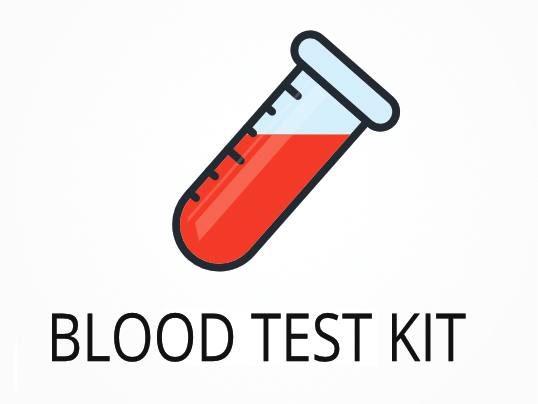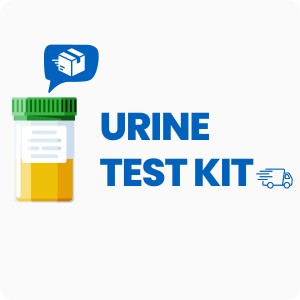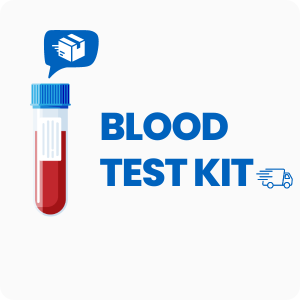Ordering the IgE Inhalants | Canada
Ordering the IgE Inhalants | Canada test helps pinpoint which airborne substances, like pollen, pet dander, or mold, may be causing allergy symptoms such as sneezing, itchy eyes, or congestion. Interestingly, this test can also detect sensitivities to less obvious triggers, such as cockroach allergens, which are often overlooked but can contribute to ongoing respiratory issues.
When ordering this test, you can expect these specific benefits:
- Identifies which environmental allergens are causing symptoms
- Helps guide targeted allergy management strategies
- Supports decisions about changes in home or work environments
- Assists in monitoring the effectiveness of allergy treatments
- Provides a clear profile of inhalant allergen sensitivities
Who Should Consider Airborne Allergen Screening
People who experience frequent sneezing, runny nose, or skin rashes during certain seasons or after exposure to pets may benefit from this test. For example, someone who notices their symptoms worsen after cleaning a dusty room or spending time outdoors in spring could use this test to identify the specific triggers.
Ordering this test may also be helpful in these situations:
- Recurring sinus congestion or headaches that seem linked to weather changes
- Children with persistent coughing or wheezing not explained by infections
- Adults with unexplained eczema flare-ups after visiting new places
- People who develop itchy eyes or hives after being around animals
- Those who notice increased symptoms after moving to a new home, possibly due to different local plants or molds
Pinpointing the cause of allergy symptoms allows for more effective treatment and can help reduce the risk of ongoing inflammation or respiratory problems. Delaying this test may mean continued exposure to triggers, which can make symptoms harder to manage over time.
How to Prepare for Airborne Allergen Panel
Fasting is not required for this test, so you can eat and drink as usual before your appointment. Always follow any instructions provided by your doctor or healthcare provider to make sure your sample is collected correctly and your results are as useful as possible.
Labs Included When Ordering Your IgE Inhalants Blood Test
| Test Name | Reference Range | Significance | Low and High Levels of IgE Inhalants Blood Test |
|---|---|---|---|
| Trees | |||
| Alder Tree – IgE | <0.35 | Measures immune response to alder tree pollen, a common spring allergen. High levels may indicate sensitivity to alder pollen in the environment. |
High levels mean your immune system reacts to alder pollen, which can cause sneezing or congestion.
Low levels mean you are unlikely to be allergic to alder tree pollen. |
| Australian Pine Tree – IgE | <0.35 | Detects allergic response to Australian pine pollen, which can be a trigger in some regions. Useful for those with symptoms during pine pollen season. |
High levels mean you may react to Australian pine pollen exposure.
Low levels mean you are not likely sensitive to this pollen. |
| Birch Tree – IgE | <0.35 | Assesses immune reaction to birch pollen, a frequent cause of spring allergies. High results suggest birch pollen is a trigger for symptoms. |
High levels mean birch pollen may be causing your allergy symptoms.
Low levels mean birch pollen is not a likely allergen for you. |
| Cottonwood Tree – IgE | <0.35 | Checks for allergic response to cottonwood pollen, which can cause springtime symptoms in some people. |
High levels mean you may be sensitive to cottonwood pollen.
Low levels mean cottonwood pollen is not likely a problem. |
| Elm Tree – IgE | <0.35 | Measures reaction to elm pollen, which can be a trigger for spring and early summer allergies. |
High levels mean elm pollen may be causing your symptoms.
Low levels mean you are unlikely to react to elm pollen. |
| Maple Tree – IgE | <0.35 | Detects immune response to maple pollen, which can cause sneezing and congestion in spring. |
High levels mean maple pollen may be a trigger.
Low levels mean maple pollen is not likely causing symptoms. |
| Mesquite Tree – IgE | <0.35 | Assesses sensitivity to mesquite pollen, which can be a problem in certain regions. |
High levels mean you may react to mesquite pollen.
Low levels mean mesquite pollen is not a likely allergen. |
| Mountain Cedar Tree – IgE | <0.35 | Detects allergic response to mountain cedar pollen, a common winter allergen in some areas. |
High levels mean mountain cedar pollen may be causing symptoms.
Low levels mean you are not likely sensitive to this pollen. |
| Oak Tree – IgE | <0.35 | Measures immune response to oak pollen, which can cause allergy symptoms in spring and early summer. |
High levels mean oak pollen may be a trigger.
Low levels mean oak pollen is not likely causing symptoms. |
| Olive Tree – IgE | <0.35 | Detects sensitivity to olive pollen, which can be a problem in some regions during spring and summer. |
High levels mean olive pollen may be causing your symptoms.
Low levels mean olive pollen is not likely a problem. |
| Pecan Tree – IgE | <0.35 | Assesses allergic response to pecan pollen, which can cause symptoms in late spring and early summer. |
High levels mean pecan pollen may be a trigger.
Low levels mean pecan pollen is not likely causing symptoms. |
| Walnut Tree – IgE | <0.35 | Detects immune response to walnut pollen, which can cause allergy symptoms in some people. |
High levels mean walnut pollen may be causing symptoms.
Low levels mean walnut pollen is not likely a problem. |
| White Mulberry Tree – IgE | <0.35 | Measures reaction to white mulberry pollen, which can be a trigger in some regions. |
High levels mean white mulberry pollen may be a trigger.
Low levels mean you are unlikely to react to this pollen. |
| Eucalyptus Tree – IgE | <0.35 | Detects allergic response to eucalyptus pollen, which can cause symptoms in some areas. |
High levels mean eucalyptus pollen may be causing symptoms.
Low levels mean you are not likely sensitive to this pollen. |
| Red Top – IgE | <0.35 | Assesses sensitivity to red top grass pollen, a common cause of summer allergies. |
High levels mean red top pollen may be a trigger.
Low levels mean red top pollen is not likely causing symptoms. |
| Russian Thistle – IgE | <0.35 | Detects allergic response to Russian thistle pollen, which can cause symptoms in late summer and fall. |
High levels mean Russian thistle pollen may be a trigger.
Low levels mean you are unlikely to react to this pollen. |
| Sweet Vernal Grass – IgE | <0.35 | Measures immune response to sweet vernal grass pollen, a common spring allergen. |
High levels mean sweet vernal grass pollen may be a trigger.
Low levels mean you are unlikely to react to this pollen. |
| Timothy Grass – IgE | <0.35 | Detects allergic response to timothy grass pollen, a major cause of hay fever in late spring and summer. |
High levels mean timothy grass pollen may be causing symptoms.
Low levels mean you are not likely sensitive to this pollen. |
| Walnut Tree – IgE | <0.35 | Assesses allergic response to walnut pollen, which can cause symptoms in some people. |
High levels mean walnut pollen may be a trigger.
Low levels mean walnut pollen is not likely causing symptoms. |
| Grasses | |||
| Bahia Grass – IgE | <0.35 | Detects allergic response to bahia grass pollen, a common summer allergen in some regions. |
High levels mean bahia grass pollen may be a trigger.
Low levels mean you are unlikely to react to this pollen. |
| Bermuda Grass – IgE | <0.35 | Measures immune response to bermuda grass pollen, which can cause allergy symptoms in late spring and summer. |
High levels mean bermuda grass pollen may be a trigger.
Low levels mean bermuda grass pollen is not likely causing symptoms. |
| Brome Grass – IgE | <0.35 | Assesses allergic response to brome grass pollen, a common cause of summer allergies. |
High levels mean brome grass pollen may be a trigger.
Low levels mean you are unlikely to react to this pollen. |
| Canary Grass – IgE | <0.35 | Detects immune response to canary grass pollen, which can cause allergy symptoms in some people. |
High levels mean canary grass pollen may be a trigger.
Low levels mean canary grass pollen is not likely causing symptoms. |
| Cultivated Oat Grass – IgE | <0.35 | Assesses allergic response to cultivated oat grass pollen, which can cause symptoms in late spring and summer. |
High levels mean cultivated oat grass pollen may be a trigger.
Low levels mean you are unlikely to react to this pollen. |
| Johnson Grass – IgE | <0.35 | Detects immune response to Johnson grass pollen, a common cause of summer allergies. |
High levels mean Johnson grass pollen may be a trigger.
Low levels mean you are unlikely to react to this pollen. |
| June Grass (Kentucky Blue) – IgE | <0.35 | Measures allergic response to June grass pollen, a common spring and summer allergen. |
High levels mean June grass pollen may be a trigger.
Low levels mean you are unlikely to react to this pollen. |
| Orchard Grass – IgE | <0.35 | Detects immune response to orchard grass pollen, a major cause of hay fever in late spring and summer. |
High levels mean orchard grass pollen may be causing symptoms.
Low levels mean you are not likely sensitive to this pollen. |
| Perennial Rye Grass – IgE | <0.35 | Assesses allergic response to perennial rye grass pollen, a common cause of summer allergies. |
High levels mean perennial rye grass pollen may be a trigger.
Low levels mean you are unlikely to react to this pollen. |
| Weeds | |||
| Cocklebur – IgE | <0.35 | Detects allergic response to cocklebur pollen, a common fall allergen. |
High levels mean cocklebur pollen may be a trigger.
Low levels mean you are unlikely to react to this pollen. |
| Common Ragweed – IgE | <0.35 | Measures immune response to common ragweed pollen, a major cause of fall allergies. |
High levels mean common ragweed pollen may be a trigger.
Low levels mean you are unlikely to react to this pollen. |
| Dandelion – IgE | <0.35 | Assesses allergic response to dandelion pollen, which can cause symptoms in spring and summer. |
High levels mean dandelion pollen may be a trigger.
Low levels mean you are unlikely to react to this pollen. |
| English Plantain – IgE | <0.35 | Detects immune response to English plantain pollen, a common cause of summer allergies. |
High levels mean English plantain pollen may be a trigger.
Low levels mean you are unlikely to react to this pollen. |
| Giant Ragweed – IgE | <0.35 | Measures allergic response to giant ragweed pollen, a major fall allergen. |
High levels mean giant ragweed pollen may be a trigger.
Low levels mean you are unlikely to react to this pollen. |
| Lamb’s Quarters – IgE | <0.35 | Detects immune response to lamb’s quarters pollen, which can cause allergy symptoms in summer and fall. |
High levels mean lamb’s quarters pollen may be a trigger.
Low levels mean you are unlikely to react to this pollen. |
| Nettle – IgE | <0.35 | Assesses allergic response to nettle pollen, which can cause symptoms in spring and summer. |
High levels mean nettle pollen may be a trigger.
Low levels mean you are unlikely to react to this pollen. |
| Rough Marsh Elder – IgE | <0.35 | Detects immune response to rough marsh elder pollen, a fall allergen in some regions. |
High levels mean rough marsh elder pollen may be a trigger.
Low levels mean you are unlikely to react to this pollen. |
| Rough Pigweed – IgE | <0.35 | Assesses allergic response to rough pigweed pollen, which can cause symptoms in late summer and fall. |
High levels mean rough pigweed pollen may be a trigger.
Low levels mean you are unlikely to react to this pollen. |
| Western Ragweed – IgE | <0.35 | Detects immune response to western ragweed pollen, a major fall allergen in some regions. |
High levels mean western ragweed pollen may be a trigger.
Low levels mean you are unlikely to react to this pollen. |
| Scale – IgE | <0.35 | Measures allergic response to scale pollen, which can cause symptoms in some regions. |
High levels mean scale pollen may be a trigger.
Low levels mean you are unlikely to react to this pollen. |
| Other Environmental Allergens | |||
| Cat Dander – IgE | <0.35 | Detects allergic response to proteins found in cat skin and saliva, which can cause year-round symptoms. |
High levels mean cat dander may be causing your symptoms.
Low levels mean you are unlikely to be allergic to cats. |
| Dog Dander – IgE | <0.35 | Measures immune response to proteins in dog skin and saliva, which can cause allergy symptoms year-round. |
High levels mean dog dander may be a trigger.
Low levels mean you are unlikely to be allergic to dogs. |
| Cockroach – IgE | <0.35 | Detects allergic response to proteins found in cockroach droppings and body parts, which can trigger symptoms in some homes. |
High levels mean cockroach allergens may be causing symptoms.
Low levels mean you are unlikely to be allergic to cockroaches. |
| Mite Generic – IgE | <0.35 | Measures immune response to dust mite proteins, a common cause of year-round nasal and skin symptoms. |
High levels mean dust mites may be causing your symptoms.
Low levels mean you are unlikely to be allergic to dust mites. |
| Mold Generic – IgE | <0.35 | Detects allergic response to common indoor and outdoor molds, which can cause symptoms year-round or seasonally. |
High levels mean mold exposure may be causing symptoms.
Low levels mean you are unlikely to be allergic to mold. |
| Total IgE | 0-100 | Shows the overall amount of IgE antibodies in the blood, which can be raised in people with allergies, asthma, or eczema. |
High levels mean your immune system is reacting to one or more allergens.
Low levels mean you are less likely to have allergic reactions. |
Reference ranges may change slightly as labs update their methods or as new research becomes available.
IgE Inhalants FAQ
Is there IgE Inhalants testing near me?
This is a test kit that can be collected at a local draw site; check the draw location link at the top of the page. For people with ongoing allergy symptoms, having a nearby collection site makes it easier to get tested quickly and start finding answers.
How do I interpret the test results?
While your treating physician should review your results, we also offer a one-on-one test results review with our clinical team to help you understand your results and what they mean for your symptoms.
What is the cost of the test?
The price listed for this test includes standard shipping to you and return shipping to the lab, though local draw fees may apply. Ordering this test can help you identify specific triggers, which may help you manage symptoms and recover more quickly.
How often should I retest?
Retesting is usually recommended every 1-2 years, or sooner if symptoms change or new exposures occur. Regular testing helps track changes in allergen sensitivities and supports adjustments in your allergy management plan.
How accurate is the test?
This test uses ImmunoCAP technology, which is a highly specific and sensitive method for measuring IgE antibodies to inhalant allergens. The specificity is 98% and the sensitivity is 96%. TrueHealthLabs.com partners with CLIA-certified and CAP-certified laboratories to uphold rigorous testing standards for dependable results.
Important Notes
None.
Medical Review Board
Reviewed by Jeff Donohue M.D. from Body Logic and Brady Hurst DC, CCCN. Written by True Health Lab’s team of editorial health contributors.
Disclaimer: This information is for educational purposes only and not intended as medical advice. Consult your healthcare provider for personalized guidance.
Why Customers Trust True Health Labs - What People are saying
Also rated 4.6 out of 5 based on 3452 ShopperApproved reviews- See all TrueHealthLabs.com reviews.









